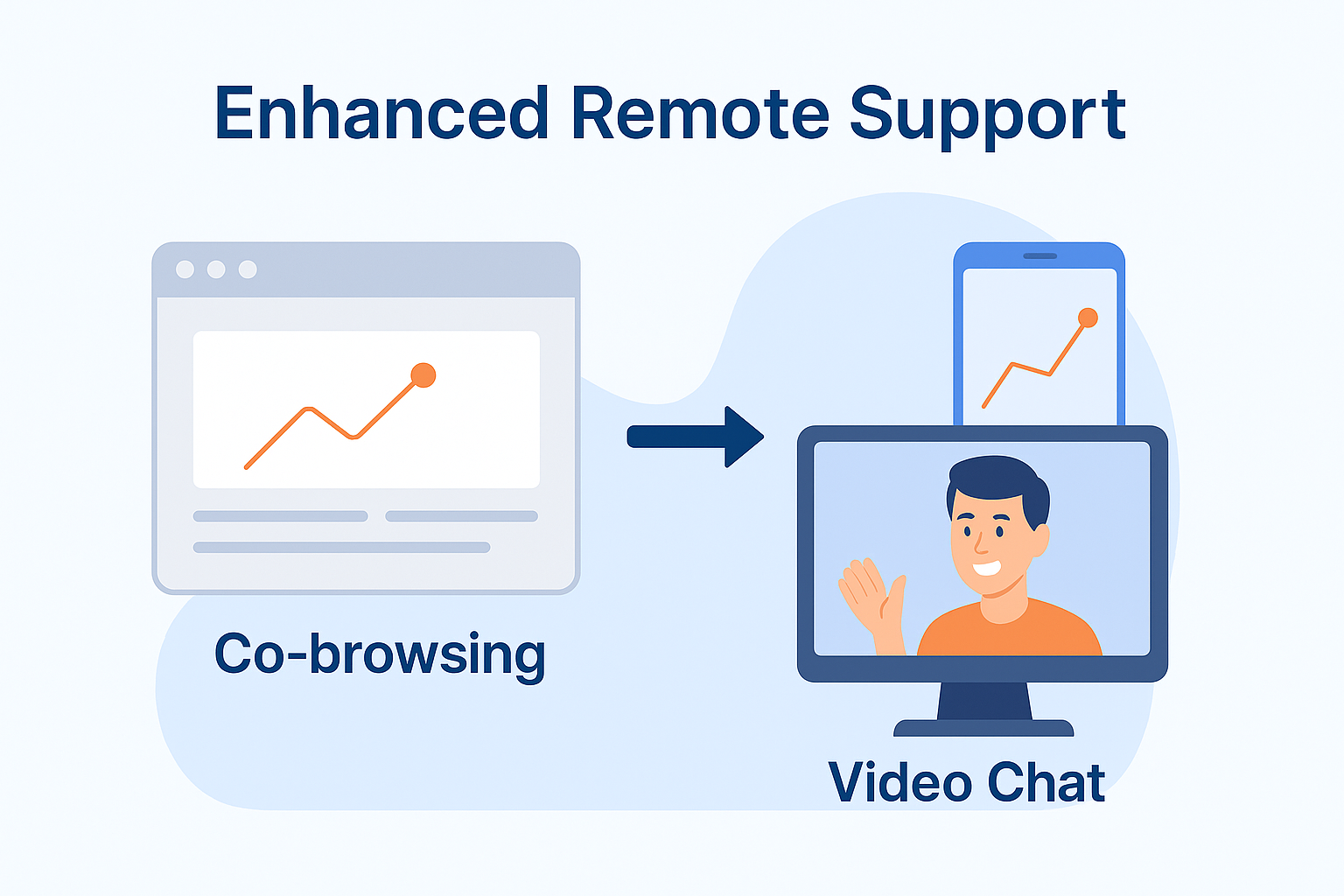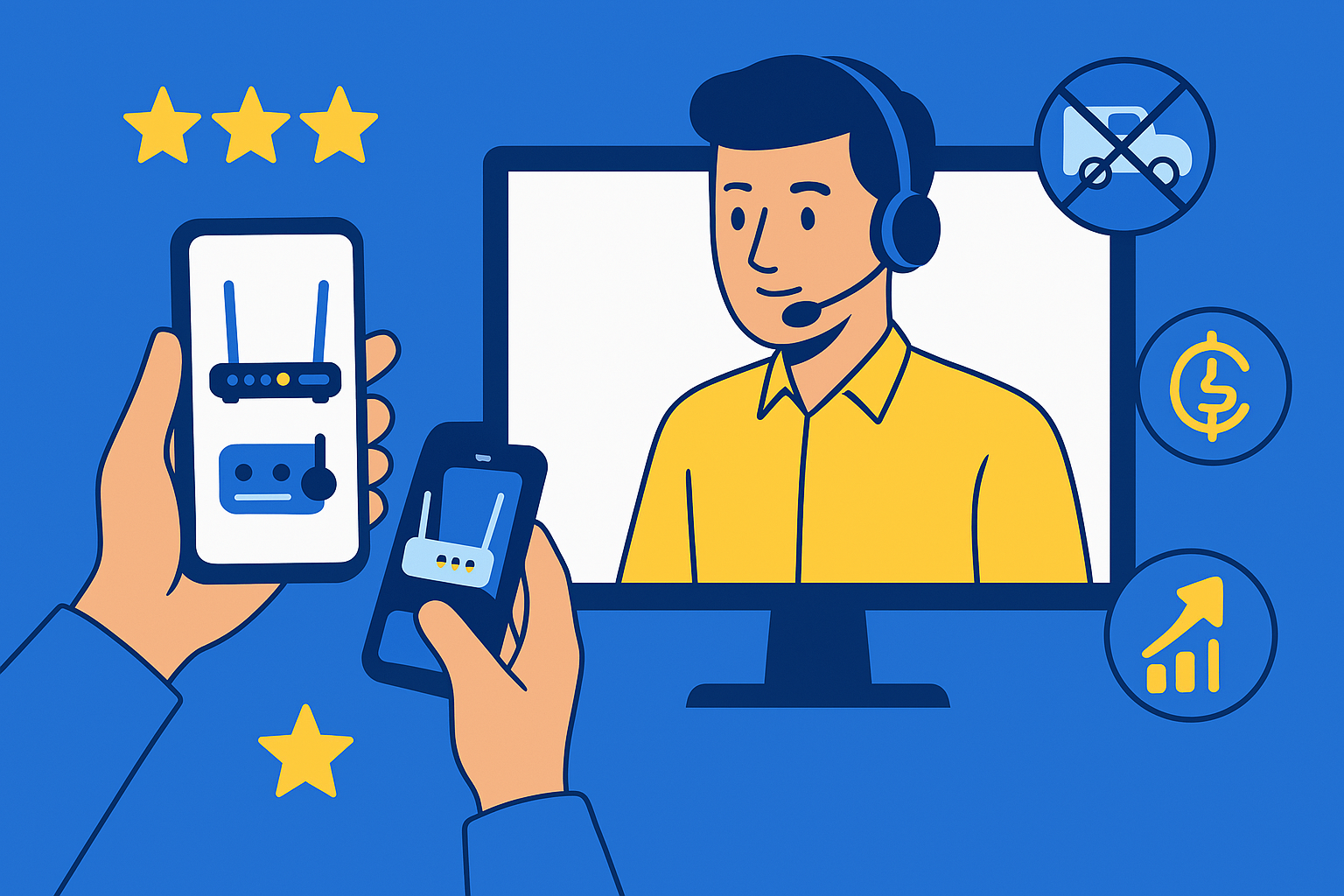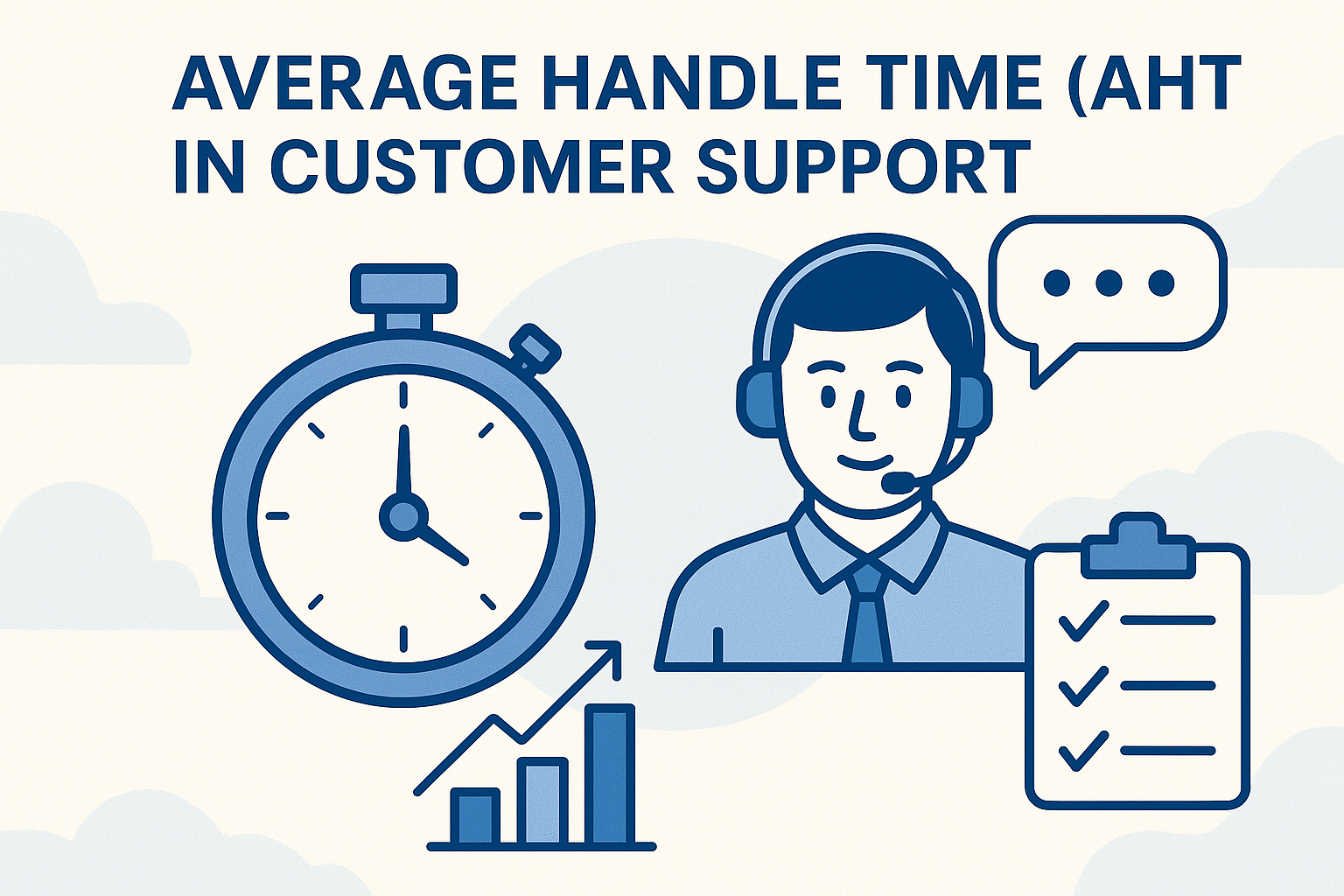Field Service, Telecom, Insurance: How Genesys + Blitzz Helps Across Industries
 Imagine you’re halfway through a complex equipment installation, and suddenly, a critical piece doesn’t fit. You pick up the phone, navigate multiple departments, and wait on hold. By the time you track down a technical expert, your schedule’s in shambles. Sound familiar? That’s exactly where remote visual support solutions step in. They let you or your team show the problem in real time, helping experts troubleshoot issues on the spot—no lengthy wait times or expensive site visits.
Imagine you’re halfway through a complex equipment installation, and suddenly, a critical piece doesn’t fit. You pick up the phone, navigate multiple departments, and wait on hold. By the time you track down a technical expert, your schedule’s in shambles. Sound familiar? That’s exactly where remote visual support solutions step in. They let you or your team show the problem in real time, helping experts troubleshoot issues on the spot—no lengthy wait times or expensive site visits.
In this guide, you’ll explore how Genesys and Blitzz team up to simplify field operations and deliver instant support. You’ll see why these visual platforms benefit anyone from Genesys Admins to insurance claims professionals. You’ll also learn how to get started, which key features to look for, and how to implement best practices.
If you’ve ever wondered how real-time video, augmented reality (AR), or annotated visuals can fix issues faster, keep reading. We’ll delve into the nuts and bolts of how these solutions cut costs, reduce truck rolls, and raise customer satisfaction—across field service, telecom, insurance, and beyond. Get ready for the ultimate overview of remote visual support solutions, so you can decide whether they fit your business (spoiler alert: they probably do!).
Understand remote visual support solutions
Remote visual support solutions let you share live video, AR overlays, or annotated images with experts or customers, even when you’re miles apart. Instead of verbal descriptions, you see what they see, which makes problem-solving faster. The technology has grown by leaps and bounds in the last few years, with broader applications than ever before. Manufacturing plants, telecom companies, warranty issuers, and contact centers all use remote visual tools to solve urgent issues—no more vague phone calls or guesswork.
Why visual support makes sense
- Real-time guidance:
- Visual collaboration means an agent or expert can point out the specific piece of equipment that needs attention.
- According to research, these real-time engagements can boost first-contact resolutions, improving customer satisfaction and cutting operational costs.
- Fewer onsite visits:
- You can perform quick assessments through a customer’s camera, diagnosing whether an in-person visit is even necessary.
- One major telecom provider cut truck rolls by 60% with remote assistance tools, as documented by Blitzz.
- Personalized assistance:
- Visual feeds allow support teams to tailor explanations, so you’re guiding someone with the exact knowledge level they need.
- Solutions like AIRe Link let technicians adjust their jargon to fit the user’s expertise, leading to higher autonomy for customers afterwards [1].
- More efficient collaboration:
- Experts can annotate directly on live video, marking areas that need fixing or highlighting dangers in hazardous environments [2].
- When you see the exact issue in real time, you can solve it much faster.
Existing tech behind visual support
Remote visual support solutions typically run on:
- Live video streaming that’s secure and GDPR-compliant.
- AR overlays to highlight instructions or label components in the user’s environment.
- Annotation features like drawing tools or text boxes.
- Integration capabilities with collaboration platforms such as Microsoft Teams or Genesys Cloud.
- Broad device compatibility, from smartphones and tablets to smart glasses or headsets [3].
Why it’s popular in customer support
Have you ever spent ages describing a weird rattling noise in your TV or an error light on your heater? Agents guess the problem, run through standard scripts, and maybe dispatch a technician who isn’t fully prepared. It’s frustrating. By contrast, remote visual support software allows that agent to see your problem and confirm a fix on the spot. It also makes the agent’s job more fulfilling—they can deliver real help quickly rather than juggling incomplete information.
Genesys, a leader in contact center solutions, focuses on bringing a personal touch to digital interactions. Combine that with Blitzz, which emphasizes high-quality remote assistance, and you get a seamless platform for real-time collaboration. You’ll dig into that partnership next.
See how Genesys and Blitzz pair up
Genesys is known for its robust contact center infrastructure, while Blitzz is recognized for its specialized video and AR-based support tools. Put them together, and you have a powerful ecosystem that can streamline virtually any customer service scenario that demands visual insight. Picture a field tech standing in front of a complex piece of machinery, connecting with a remote expert who uses Genesys to route calls and Blitzz to see exactly what’s happening.
The synergy of Genesys plus Blitzz
-
Unified contact center flow:
Genesys handles your IVR (Interactive Voice Response), call routing, and case management. Blitzz adds the “eyes-on” experience, letting agents see the issue in real time. This synergy means you manage everything from one seamless environment, cutting back on tool-hopping. -
Reduced downtime and rapid fixes:
Visual context slashes guesswork. You identify solutions faster, leading to fewer errors and happier customers. For instance, a field technician can point a smartphone camera at a malfunctioning component, and the remote expert can annotate the exact bolt or circuit that needs adjusting. -
Consistent user experience:
Blitzz’s remote visual assistance tools integrate with Genesys, so customers experience the same brand interaction they’re used to, only with an added layer of real-time video support. That leads to a consistent brand message and better overall satisfaction.
How it works in practice
Step back and imagine a typical call center scenario without remote visual support solutions. The agent references a knowledge base, tries to interpret your descriptions, and might schedule an in-person appointment. That alone can be time-consuming.
With Genesys plus Blitzz:
- A customer calls into your Genesys-powered help desk.
- The agent offers a remote video session.
- The customer clicks a secure link (no downloads needed, in many cases).
- The agent sees the faulty device or environment through the customer’s camera.
- The agent “draws” on the live video feed to guide the customer to a quick fix or confirm the next steps.
The result? One call, no confusion, and a more personal connection. According to recent data, customer satisfaction can rise by up to 30% when relying on visual remote support [4].
Global scalability
Genesys has a global footprint. Blitzz is flexible enough to adapt to different industries and languages, making the pair suitable for multinational operations. For instance:
- Telecom companies spanning multiple countries can reduce operational costs significantly.
- Insurance carriers can quickly scale claim inspections without dispatching inspectors to every location.
- Large manufacturing plants can connect field teams anywhere in the world to top-notch experts.
Whenever you think about adding visual assistance to your contact center stack, keep in mind that Genesys plus Blitzz is designed to handle large volumes and complex workflows. If you want to explore additional tools, check out our overview on remote visual assistance tools for a deeper look at other powerful platforms.
Benefit key industries
Now, let’s break down how remote visual support solutions bring tangible results in field service, telecom, and insurance. Though these are major sectors, virtually any industry that depends on rapid, accurate assistance can benefit.
Field service teams
If you manage or work in field operations, you know that every site visit costs time, money, and scheduling overhead. With remote visual support, you don’t have to guess what equipment or part you’ll need—expert teams can verify the problem beforehand.
-
Faster on-site fixes:
By diagnosing precisely, field agents can bring the correct tools and parts from the start. No wasted trips. -
Reduced safety risks:
In high-risk settings (say an offshore rig or a hazardous plant), remote experts can guide on-site staff with AR overlays, highlighting risk areas so everyone stays safe [5]. -
Less downtime:
Quicker fixes mean less production delay. Manufacturing plants, for example, avoid prolonged shutdowns because they solve mechanical issues faster—often within a single support session.
Example scenario
Imagine a field technician working on a wind turbine. They’re uncertain about an internal switch that’s malfunctioning. Instead of climbing down to consult a manual or waiting for an expert to arrive, they use the Genesys+Blitzz interface to show their vantage point via a head-mounted camera. An expert at headquarters draws on the screen to indicate exactly which screw or setting to adjust. Problem solved in minutes.
Telecom service providers
Telecom is another industry that reaps huge benefits from remote visual support solutions. It’s no secret that telecom networks are sprawling and complicated. Whether you’re installing new lines or troubleshooting residential issues, a visual approach can simplify everything.
-
Decreased truck rolls:
Research from Blitzz shows that major telecom providers have trimmed field visits by 60% through remote video inspections. That’s a massive cost saving and means quicker resolutions for the customer. -
Smoother customer experiences:
Rather than a user describing a blinking modem light, a support agent can see it directly. Complex equipment, specialized configurations—in many cases, you can solve them remotely, saving both parties time. -
Training made easier:
New telecom recruits learn faster when they can see real field scenarios without physically traveling to each site. Remote experts can walk them through the steps on live calls, reducing typical onboarding times.
Insurance and claims
Insurance claims often involve property damage or accidents that require someone to assess or inspect a site. That has traditionally meant scheduling an in-person visit by an adjuster, which can be clogged with delays. Enter remote visual support solutions.
-
Quick, accurate claim assessments:
Customers can stream live video of vehicle damage or property issues directly to the claims adjuster. That eliminates guesswork and speeds up the entire claims cycle [6]. -
Enhanced trust and transparency:
The customer sees the adjuster guiding the inspection in real time. Both parties have visual proof, building confidence in the claim process. -
Lower operational costs:
Insurers don’t have to send adjusters to every single site. Only complex or large-scale claims might need an on-site visit, drastically cutting travel expenses.
Example use case
A policyholder has moderate water damage in their basement. Instead of waiting days for an adjuster’s visit, they hop on a remote session. The adjuster watches live, asks the homeowner to shine a camera light on the damaged area, takes screenshots, and confirms the claim. The user feels supported; the insurer closes the file faster; everyone wins.
More potential use cases
While field service, telecom, and insurance are prime users, the possibilities span many industries:
- Manufacturing: Quickly troubleshoot assembly line stoppages.
- Utilities: Guide customers to safely shut down water or power lines during minor emergencies.
- Construction: Perform remote site inspections, saving on repeated site visits.
Remote visual approach isn’t just a fancy add-on. It’s a strategic game-changer for any operation that benefits from seeing an issue rather than guessing about it. If you’re curious about how to integrate these solutions in your Genesys workflow, consider reading our guide on genesys remote visual support.
Check essential features
When you’re exploring remote visual support solutions, it’s crucial to pick software or platforms that align well with your existing workflows. Here’s a handy checklist of must-have features:
- Real-time video and AR overlays
- Ensure your chosen platform allows seamless live streaming, plus the ability to annotate on the user’s screen.
- AR overlays multiply your clarity by letting remote support agents highlight exactly what needs attention.
- Multi-device support
- Smart glasses, mobile phones, tablets, or even drones—your solution should adapt to multiple hardware options [3].
- This flexibility is a lifesaver in dynamic field conditions, where you can’t always choose the perfect device.
- Secure, GDPR-compliant data channels
- Data security matters. Make sure your visual support sessions are fully encrypted.
- Platforms like Blitzz, AIRe Link, and PlutoMen emphasize compliance, so you avoid risking customer trust.
- Integration with CRM and contact center systems
- Connect seamlessly to Genesys Cloud, Salesforce, or other major CRMs.
- If you run Genesys, you want a solution that hooks neatly into your daily environment.
- User-friendly experience
- Many remote visual support software solutions can launch from a browser or a quick link. No app downloads, no fuss.
- Simplicity encourages higher adoption rates among both staff and customers.
- Annotations and guided workflows
- Agents should be able to freeze images, mark them up, and direct the customer or tech in real time. A screenshot with a helpful arrow is extremely powerful mid-call.
Take note of these features before you commit to a single platform. Remember, the best remote visual support solutions align with your specific business goals. If you’d like more guidance on choosing the right system, see our breakdown of remote visual support software to compare available options.
Start your integration
Deciding to adopt Genesys plus Blitzz (or any robust remote visual support tool) is just part of the journey. You’ll need a solid plan for training, rollout, and measuring results. Here’s how you can kick off the process:
1. Audit your current ecosystem
-
Identify pain points:
Is your main issue high call volume, repeated site visits, or slow claim settlements? Get clear on your biggest challenges so you can measure improvements later. -
Map out existing tools:
Make sure you know each piece of software your contact center uses. That includes CRMs, ticketing tools, knowledge bases, and internal communication platforms. -
Align with your digital transformation strategy:
Check whether your potential solution complements your broader plan. If you’re ramping up cloud adoption or aiming for zero site visits in certain cases, remote visual support solutions should integrate seamlessly.
2. Pick a reliable vendor
-
Ask about training and onboarding:
Look for a solution provider that offers strong customer support, onboarding sessions, and easy-to-access help channels [3]. -
Check the track record:
How established is the vendor in your sector? Genesys and Blitzz clearly have an excellent synergy with contact center scenarios, but it never hurts to see what user testimonials say. -
Ensure a scalable architecture:
Maybe you’re starting small, but you could expand globally. Ask whether the platform handles large user bases and multiple languages.
3. Train your team
A remote visual support solution is only as good as your agents’ and technicians’ skills:
- Provide hands-on demos:
Let your staff try out live sessions, annotation tools, and AR features in a sandbox environment. - Use step-by-step tutorials:
For example, you might follow best practices found in implementing remote visual support so your staff can walk through each configuration detail. - Keep reference materials:
Simple how-to guides or quick video tutorials can make a world of difference.
4. Launch a pilot program
Testing your new system on a smaller scale helps you spot problems before rolling it out across the entire organization:
- Pick a specific team or department:
Field service in one region, a select group of telecom support reps, or a single insurance claims unit. - Gather feedback:
Ask your pilot users how well the tool integrates with Genesys. Did it reduce resolution times? Did it cause any confusion for end users? - Iterate and refine:
Tweak your processes based on what the pilot group reports.
5. Monitor KPIs and ROI
It’s not enough to launch and forget. Gather real-world data:
- First-contact resolution rate:
Are you solving issues in a single call or remote session more often now? - Call handling time:
Are your agents spending less time parsing complicated descriptions? - Customer satisfaction (CSAT):
Surveys can show how remote visual support changes customers’ service perception. A 30% uptick isn’t unusual, according to ICMI - The Call Center Industry. - Operational costs:
Keep an eye on reduced site visits and travel expenses. Some companies cut them by over half.
By following this roadmap, you set up a structure that supports continuous improvement. Eventually, remote visual support can become part of your organization’s DNA, leading to faster fixes, more engaged customers, and measurable cost savings.
Conclusion
Remote visual support solutions are swiftly becoming a standard—no longer a luxury—for businesses that need to diagnose and solve problems fast. If you’re working with Genesys, pairing up with Blitzz can be a game-changer. You’ll be able to connect remote experts with field techs, process insurance claims at record speed, and offer telecom customers a white-glove experience.
Whether you’re pausing that frantic phone call with a customer or saving your field tech a commute, adding visual confirmation to your service is what sets you apart in today’s competitive landscape. Instead of describing a problem verbally, you show your colleagues or your customers exactly what’s wrong and collaborate on a real-time solution. It’s faster, clearer, and more personal.
Now that you have an inside look at the benefits—fewer truck rolls, happier policyholders, and fewer head-scratching calls—it’s time to explore your options. Check out our articles on remote visual assistance tools, genesys remote visual support, implementing remote visual support, and remote visual support software for a deeper dive. With the right planning, training, and integration, you’ll bring clarity to every remote troubleshooting scenario, no matter the industry. And who doesn’t want that?
Give it a shot and see how quickly your customers start saying, “That was easy!” Instead of waiting for help to arrive, they’ll get instantaneous guidance—and you’ll earn their trust along the way.
.png?width=120&height=55&name=Blitzz-Logo-right%20white%20eyes%20-%20not%20transparent%20(3).png)


